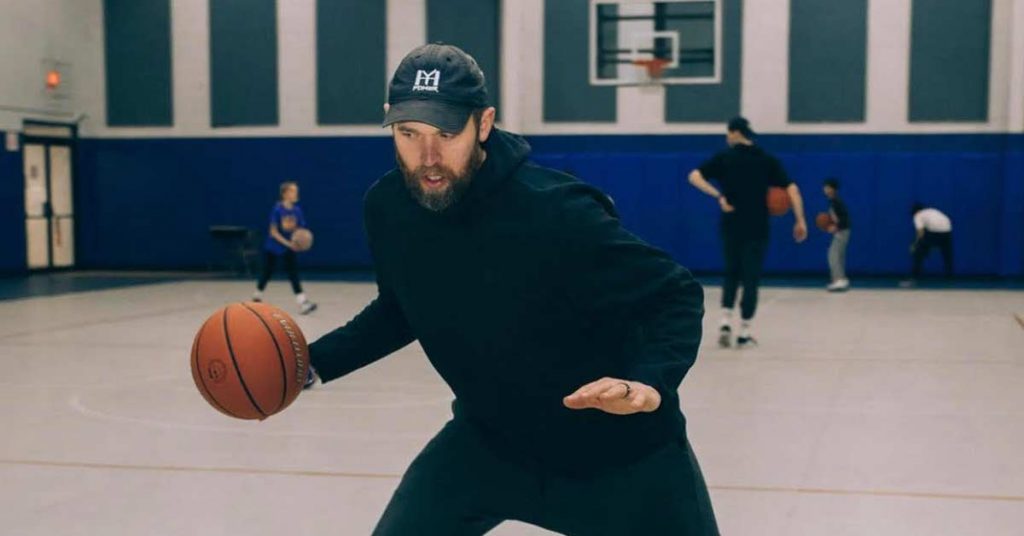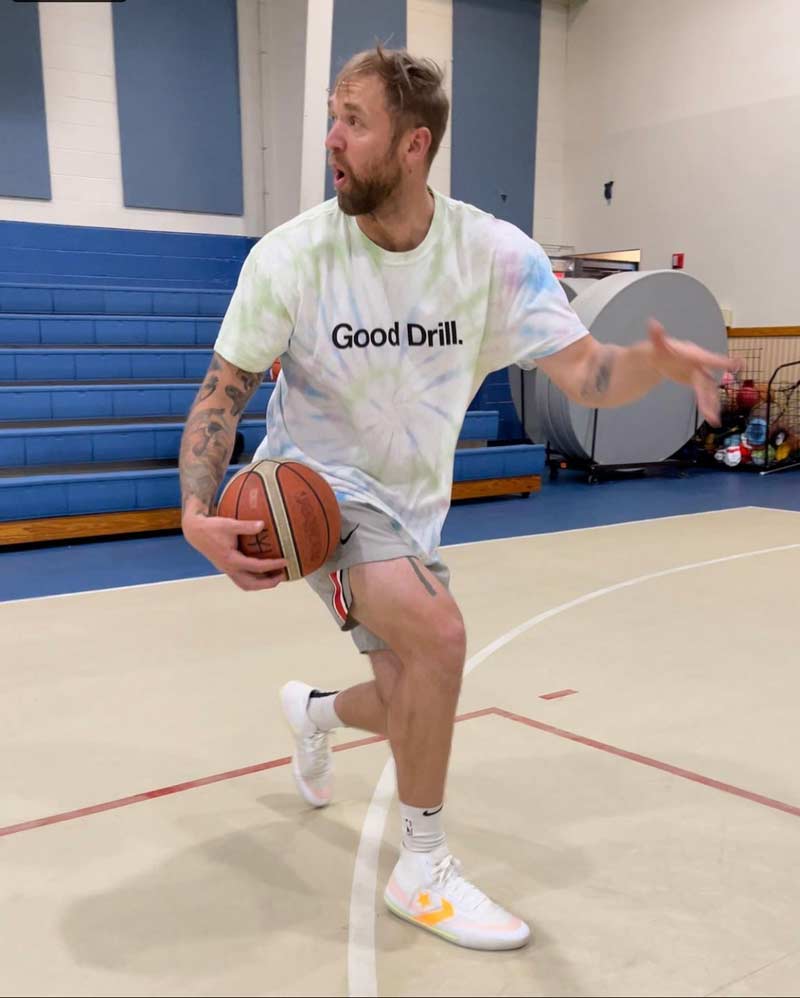
Bobby Whyte is an athletic performance and basketball skill enhancement trainer operating out of Northern New Jersey. He is the owner of HyPower Performance, where he trains many of the top players in the country.
Bobby’s focus is on developing the complete basketball athlete. His personal journey, from a 12-inch vertical jump at age 15 to playing and coaching basketball internationally, provides him with the understanding and confidence he needs to tailor programs that maximize individual development. Bobby carries several certifications that focus on mobility, including both Functional Range Conditioning (FRC) Kinstretch and Functional Movement Systems (FMS). He has worked with athletes ranging from beginner to NBA, NFL, and overseas professionals.
In 2016, Bobby spent six months working in China as the Head Strength Coach for the Guangxi Rhinos. More recently, he has directed a series of youth basketball camps in Israel. He has also been the Strength and Conditioning Coach for Hudson Catholic (Nike Elite High School) for the past four basketball seasons. Bobby has the ability and knowledge to develop skill and performance programs to deliver complete, healthy athletes. He believes growth takes place at the edge of ability, and it is his passion to bring athletes to that edge.
Freelap USA: You’ve been in pretty much every role in the basketball community—from player to coach to strength coach to skills trainer—and now you’re incorporating all facets of basketball development in-house. How has this all-inclusive training style impacted your ability to make a difference with your athletes?
Bobby Whyte: The biggest benefit is that I’ve been able to see what really moves the needle. Sure, I want to get my athletes bigger, stronger, faster, like everyone, but I don’t want to forget why they are really coming to me: to get better at their sport.
I’ve been training and coaching for about 10 years now, and the last seven years have been 99% basketball athletes. My goal has always been to make the process as efficient as possible. In my opinion, having all facets under one roof accomplishes this.
It also streamlines communication. I have one less variable to account for when they show up to train because I know exactly what they’ve been doing both on the court and in the weight room. I believe it has also had a tremendous impact on my relationships with my athletes. There’s something to be said for having the ability to get out from underneath the bar and mix it up on the court.
Freelap USA: I’ve heard you talk a lot about a constraints-led approach to your skill development training. Can you explain this approach and some of the major benefits athletes get from this style in comparison to a more traditional style of training?
Bobby Whyte: Rather than the traditional model of skill development, where the goal is to “automate” skill by performing countless reps, the constraints-led approach gives the athlete an opportunity to be an athlete.
Athletes are viewed as an adaptive system rather than some robot that needs to be programmed. The coach creates problems for the athletes to solve instead of giving them the answers. It could be as simple as changing the size of the ball, playing area, or goal. You could also create an elaborate drill with all types of variables.
It’s been absolutely amazing watching kids transform just by giving them permission to create and explore. They are able to find their own movement solutions and have more fun as a result. If we look at top performers in any sport, we see they have unique qualities that make them effective.
The constraints-led approach promotes this type of expression, while traditional methods may rob young athletes of valuable learning experiences. This approach also allows the coach to become a “master game designer” rather than some drill sergeant commanding an ideal technique.
Freelap USA: You recently released an e-book training program called “Good Drill.” This has strength, speed, and skill development concepts for basketball players of all age and talent levels. First, can you tell us the backstory of how “Good Drill” became a running-joke-turned-program, and then can you tell us about what makes this e-book such a unique opportunity for athletes?
Bobby Whyte: It started when I got tired of writing long captions on Instagram that everyone would forget by the next day and never see again. I saw it as an opportunity to simultaneously poke fun at trainers who say, “this is the best drill for xyz…” and the people who DM me daily and ask, “what’s a good drill for xyz?”

I also remembered something I learned in a mastermind group about simplicity in marketing, and “Good Drill” was born out of sarcasm. After about a year later and writing it 1,000 times under posts, it seems to have evolved into a worldwide phenomenon. To answer your second question: It’s good.
I believe there is an over-reliance on trainers and coaches today. Everybody has the answer. The athletes are the answer. So, I put together one program where you get a blueprint on how to become your own trainer both on the court and in the weight room. I really think it’s the only program out there that does that. If I’m wrong, let me know, and I’ll have to fight the guy or come up with something else…
Freelap USA: With the explosion of social media, the mixtape era, and poorly run summer basketball circuits, sometimes it can seem like youth basketball is trending in a bad direction. What is your viewpoint on the current state of developmental basketball?
Bobby Whyte: Too much hype, not enough depth. I could go on for days about the stuff I’ve seen, but I’ll spare you. I’d rather help a kid develop a soul of iron than a million followers. For a while, I kept quiet on social media because I honestly hate the side of the game you’re referring to. I’ve decided being quiet won’t change anything, so I’m going to attempt to plow a counter-culture and put out content that makes me happy.
Freelap USA: What are the three mistakes during your career that you’ve learned the most from and that have helped you develop your coaching to what it is today?
Bobby Whyte: Early on, I just started training everyone I could one on one. It’s really tough to scale that. I ended up at 60+ hours a week in the gym. I was making more money than I thought I ever would, but I was miserable and tired. I don’t care how much you love training; if you do it 60 hours a week, you’re not going to be the best version of yourself. If you’re just starting out, plan to dominate and put together a model that allows you to dominate. I love talking about this stuff, so shoot me a DM if you read this interview and want to dive deep.
Another mistake—I made a completely sarcastic joke about one of the athletes I trained to another athlete I trained. He was like a little brother. The joke got to him as intended, but the sarcasm was lost in translation. I did my best to explain myself, but the relationship has never been the same. I honestly get sad every time I think about it. He happened to be a very high-level athlete, and I’m reminded of the mistake when I see him playing on TV. Today, I’m a little more guarded with my words. Communication is powerful.
Lastly, I used to really worry about making everyone happy. I would let clients slide on payments or stuff like that, because I didn’t want to deal with the confrontation. It led to resentment and built-up anxiety. I honestly worked through a lot of this in therapy.
Today, I understand that I may not be ideal for everyone out there. It’s okay if not everybody likes me. I also have my wife run the backend of the business, so I don’t need to have the money conversations. If a dad tries to talk to me about money, I quickly tell him I will confuse the entire situation and direct him to my wife. Life is better this way. I highly recommend it.
Since you’re here…
…we have a small favor to ask. More people are reading SimpliFaster than ever, and each week we bring you compelling content from coaches, sport scientists, and physiotherapists who are devoted to building better athletes. Please take a moment to share the articles on social media, engage the authors with questions and comments below, and link to articles when appropriate if you have a blog or participate on forums of related topics. — SF

